LIGO’s Black Holes Probably Did Not Come From One Star
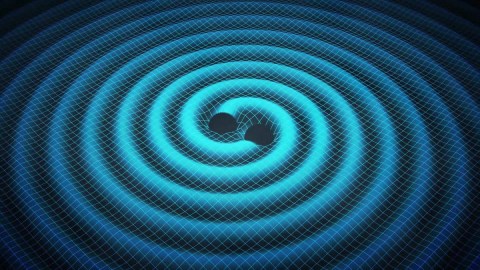
There’s a new theory out there that these merging black holes came from a single star. What are the odds?
“Even if the Fermi detection is a false alarm, future LIGO events should be monitored for accompanying light irrespective of whether they originate from black hole mergers. Nature can always surprise us.” –Avi Loeb
When LIGO detected gravitational waves for the first time, we were delighted, but we weren’t surprised. Theorists had calculated exactly the type of LIGO-sensitive signal that should result from the merger of two massive black holes, including the mass-dependent frequency and amplitude of gravitational waves that would result during the inspiral, merger and ringdown phases. As far as the gravitational wave signal went, we couldn’t have asked for a better alignment of theoretical predictions and observational measurements, in both detectors and with the right delay.
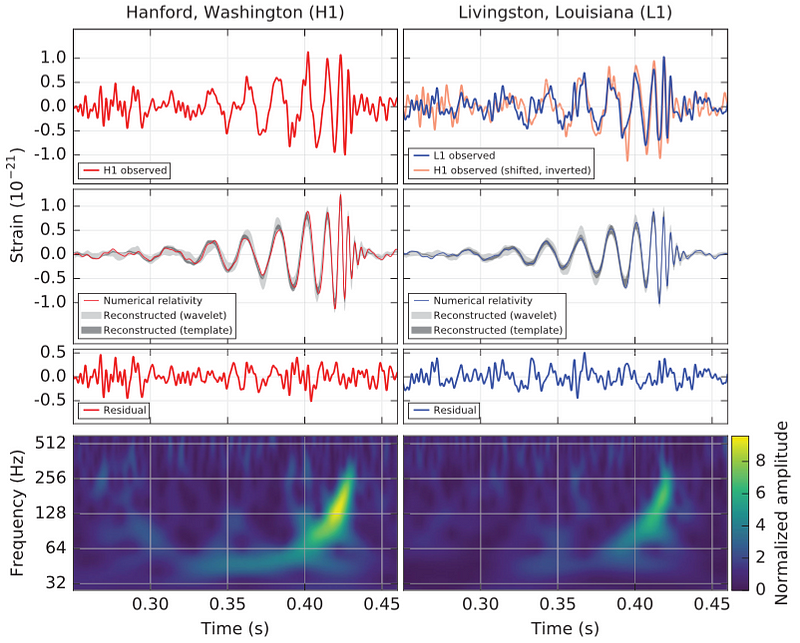
But gravitational waves are only one window into the Universe. We can also look for light of all wavelengths, including in the highest energies: the gamma rays. NASA’s Fermi satellite can look for gamma ray bursts across ~70% of the sky at once, and was doing exactly this on September 14th, 2015, when those two black holes merged some 1.3 billion light years away. Based on the LIGO data, they were able to correlate one such signal — a gamma ray burst in the same direction of the sky — with that exact black hole merger, having occurred just 0.4 seconds after the LIGO event. This is a puzzle, because short-period gamma ray bursts are supposed to come from neutron star-neutron star mergers, not from black hole-black hole mergers!

The reason this is such a problem is that gamma rays are emitted from high-energy accelerations of massive particles, normally by intense electromagnetic fields. Neutron stars have the strongest known magnetic fields in the Universe, and when they collide, their outer layers (10% of them are made of charged particles) emit catastrophic amount of gamma-ray radiation, capable of frying any living being within trillions of miles. But black holes don’t have that, and hence they shouldn’t emit gamma rays when they merge. So if they did, how did they do so? Avi Loeb at Harvard recently put forth an idea that’s gotten a lot of traction: perhaps these black holes were merging from the interior of a single, solitary star.
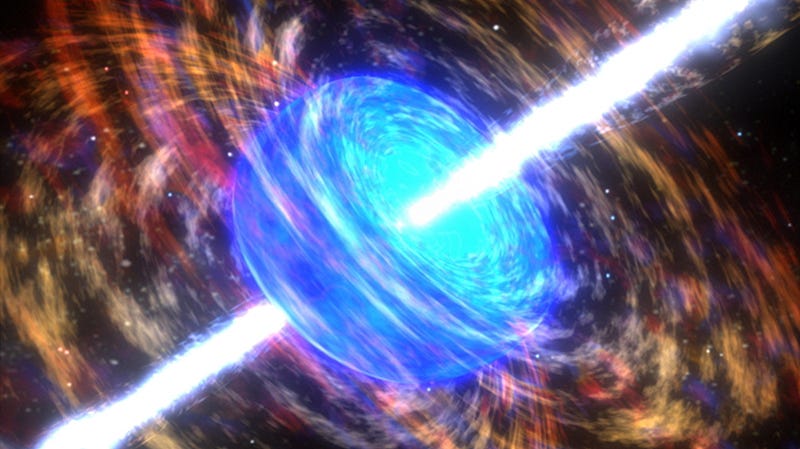
This idea is interesting, because it builds off of an underappreciated idea in astrophysics: that black holes might not only be the end state of supermassive stars, but that they might exist inside of dense, massive stars even while they’re still burning. Remember that a black hole is simply a region of space where matter is so dense and gravity is so strong that even if you moved at the speed of light, you wouldn’t be able to escape its gravitational pull. For stars that are hundreds of times as massive as our Sun, or even for ultra-dense neutron stars of a sufficient mass, perhaps the very central region — where mass concentrations, densities and pressures are the highest — are already black holes, even as the outer layers remain uncollapsed. So maybe, Loeb’s thinking goes, there can be two black holes inside of a star if it rotates rapidly enough. When these black holes spiral in and merge together, perhaps they create the gamma ray burst that the Fermi satellite saw.
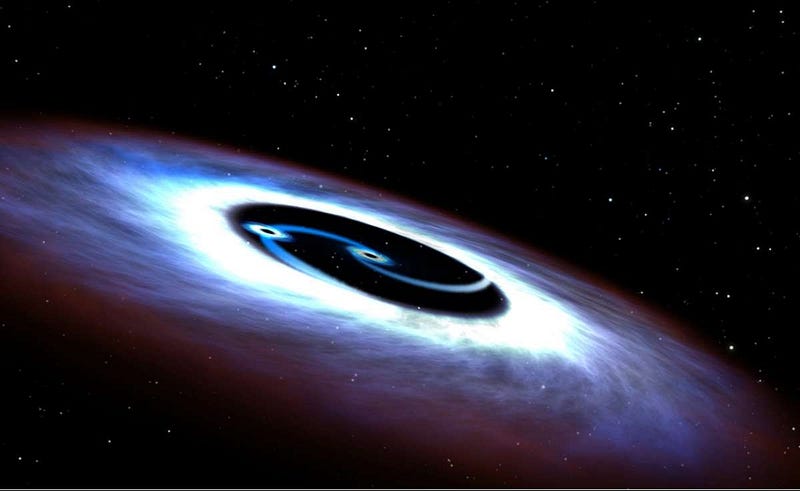
The best thing I can say about this idea is that it falls into the category of “not automatically impossible.” The tough thing about it is that even for the most rapid rotators, the stars themselves are still highly non-relativistic, meaning they spin at velocities well below (significantly less than 10%) the speed of light, while the inspiraling black holes were moving at speeds very close to (about 60%) the speed of light. While two merging-and-colliding black holes inside a single, supermassive star could have produced a gamma ray burst, there are other explanations that are highly regarded as more likely:
- The two black holes that merged could have had accretion disks, and when the disks collided, they heated up, emitting gamma rays during the merger.
- The two separate progenitor stars that led to the black holes had expelled most of their matter into the space around them, but some of that matter remained closely gravitationally bound. When those black holes merged, the matter that was close enough heated up and caused some gamma ray emission.
- The interstellar medium near the black hole contained matter, and the changes in magnetic fields during the merger (perhaps they do have strong magnetic fields!) caused a rapid acceleration of those charged particles, leading to gamma ray emissions.
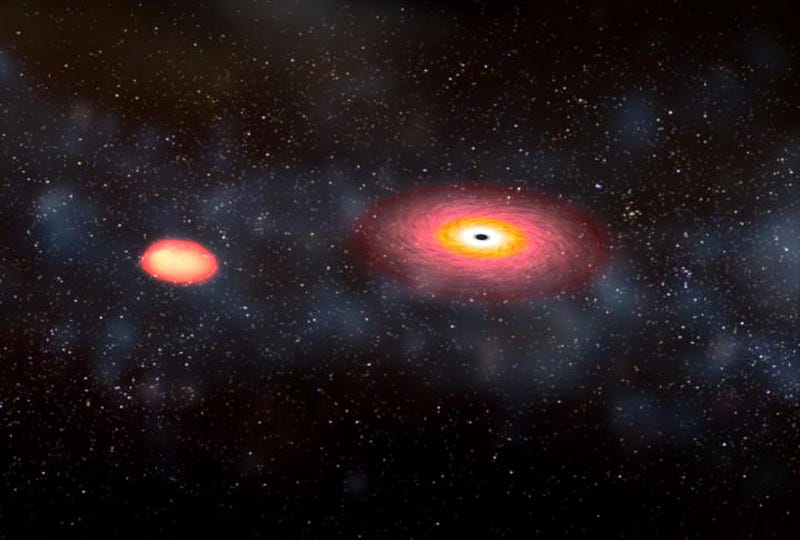
If I had to bet, I’d go with option 1, since that scenario consists of things that are supposed to exist, and provides a nice, simple mechanism not only for how this would have happened, but even explains how there’s a small (less than 1 second) delay from when the gravitational waves arrived to when the photons arrived. Nothing is certain and it’s important to explore all the possibilities, but the single star explanation is probably the least likely of all. As more LIGO events come in, and as we not only use Fermi but other gamma ray observatories (like the ESA’s INTEGRAL satellite), perhaps we’ll come to understand these mergers — and the physics taking place in their environments — even better.
This post first appeared at Forbes. Leave your comments on our forum, check out our first book: Beyond The Galaxy, and support our Patreon campaign!





